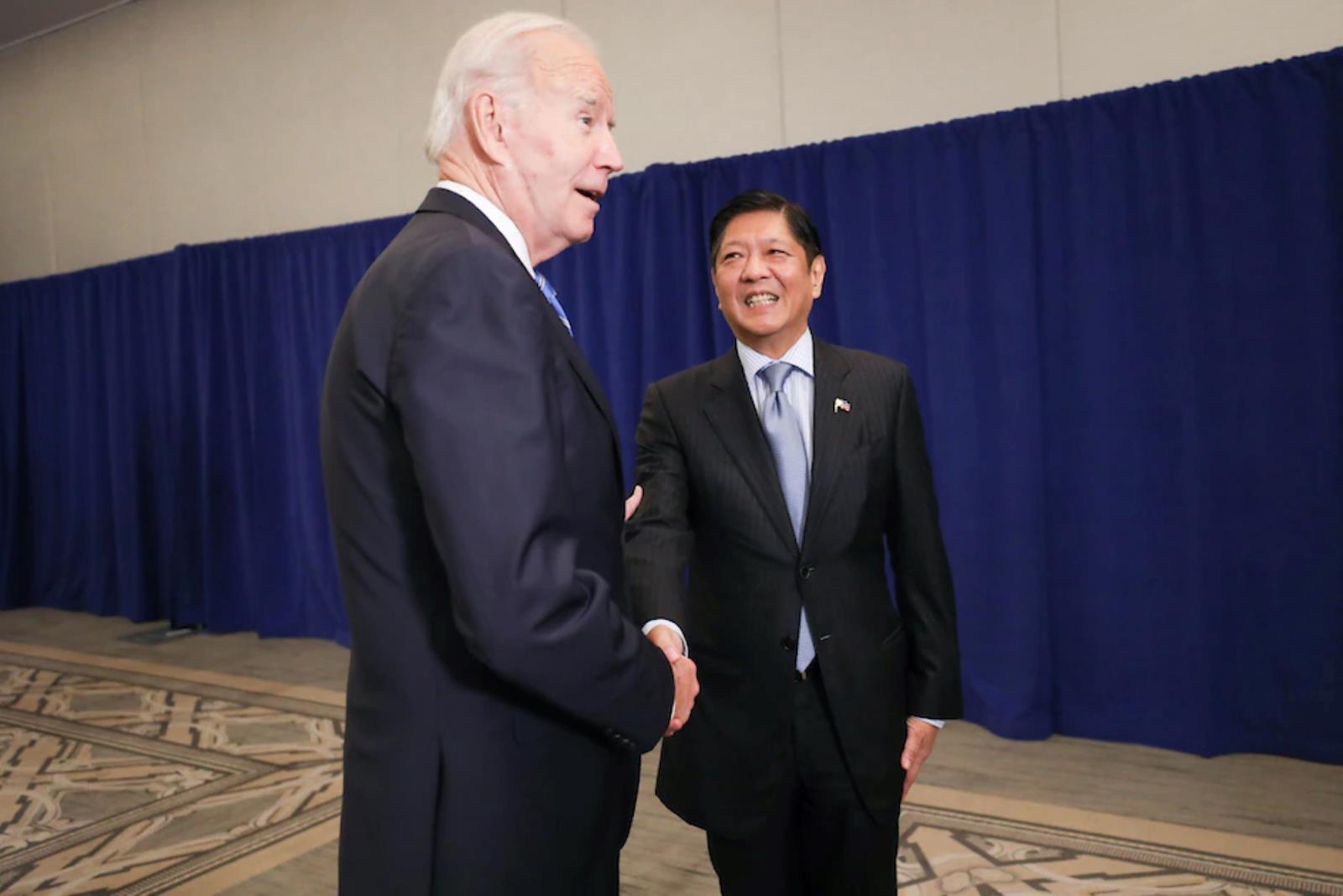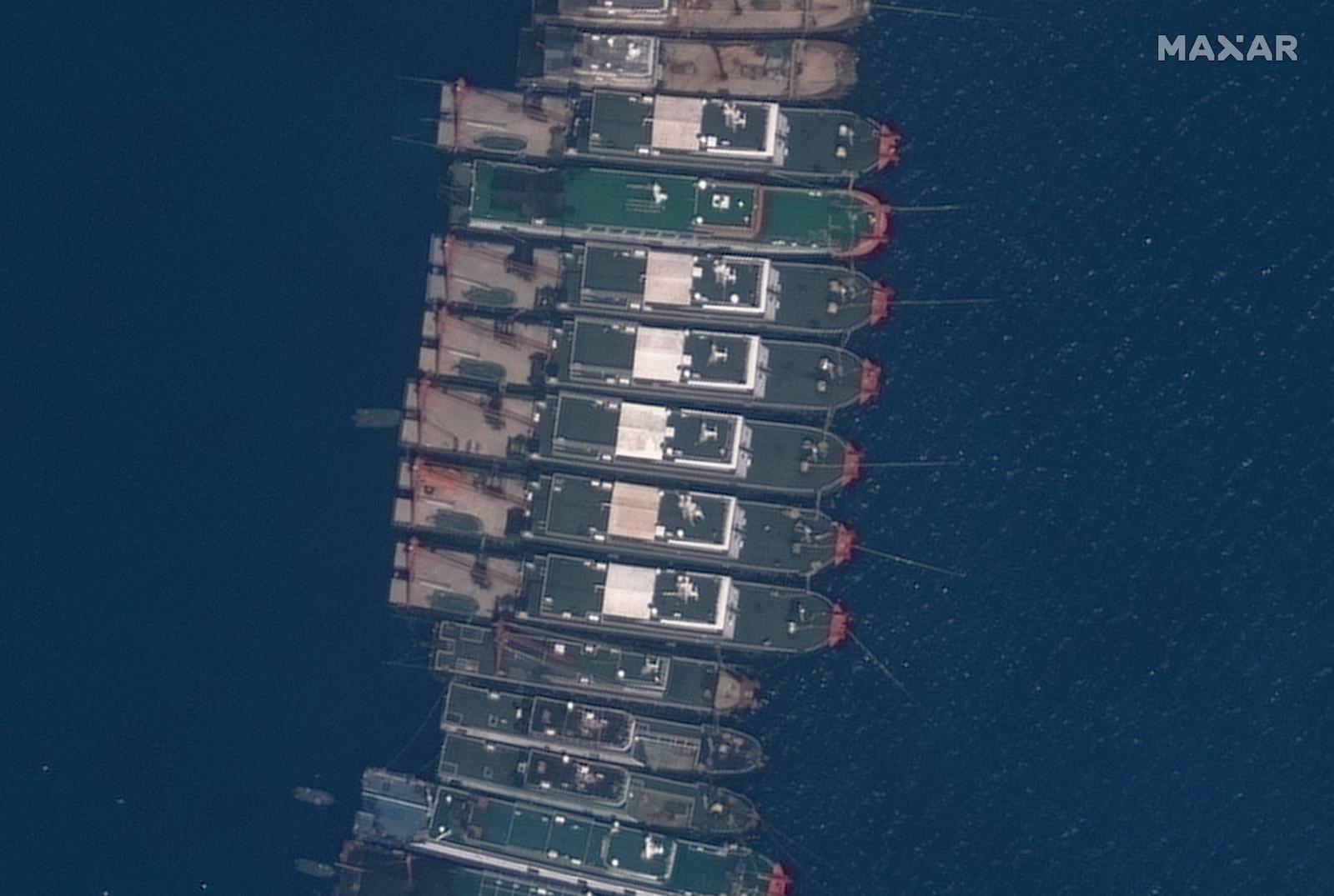Posted to MENAFN-Asia Times (May 8, 2023): US-Philippines Deepen Defense Guidelines On China (By Richard Javad Heydarian)
(MENAFN- Asia Times) “We will always have your back in the South China Sea or elsewhere in the region,” US Defense Secretary Lloyd Austin told his special guest, Ferdinand Marcos Jr, during a special visit by the Filipino president to the Pentagon last week.“Let me tell you once again that our Mutual Defense Treaty applies to armed attacks on our armed forces, coast guard vessels, public vessels, or aircraft in the Pacific including anywhere in the South China Sea,” the US defense chief reiterated to dispel any doubts about the relevance of the alliance to Manila's ongoing tensions with Beijing in the disputed waters.
For the first time under the Joe Biden administration, a foreign leader was accorded full military honors , even if Marcos Jr was not on a working visit to Washington, DC, underscoring the growing significance of the Philippine-US alliance in an era where regional states are being pressed to take sides in the escalating US-China rivalry.
Although the Biden-Marcos Jr confab at the White House dominated headlines, the visit to the Pentagon was arguably the most consequential leg of the Filipino leader's latest visit to the US.
Underscoring the comprehensive nature of the Pentagon discussions, Marcos Jr was accompanied by Philippine Justice Secretary Jesus Crispin Remulla, Environment Secretary Antonia Yulo-Loyzaga, and Information and Communications Secretary Ivan John Uy.
Following the high-level meeting, the two allies released on May 3 a six-page“bilateral defense guidelines” document, which aims broadly to strengthen military cooperation amid shared concerns over China.
Crucially, the new guidelines underscore the urgency of jointly addressing so-called“gray zone” threat s posed by China's maritime and militia forces in Philippine-claimed waters.
Over the past few weeks, Manila has been sending mixed signals in light of the expansion of the parameters of the Enhanced Defense Cooperation Agreement (EDCA), which grants the Pentagon extensive access to more than half a dozen bases facing the South China Sea as well as Taiwan.
“The foreign minister of China [Qin Gang] just visited [me recently in Manila] and I told him and I assured him that no, these are not ... intended to be military bases to attack, to move against anyone...not China, not any country,” Marcos Jr said during his trip to the US, referring to the new EDCA sites in the northern provinces of Cagayan and Isabela, both of which are close to Taiwan's shores.
The Filipino leader repeatedly denied that the EDCA sites will serve as “staging areas” for America's potential offensive operations against China, especially in the event of an all-out conflict over neighboring Taiwan.

President Ferdinand Marcos Jr meets US President Joe Biden in a bilateral meeting on the sidelines of the UN General Assembly on September 22, 2022. Photo: Office of the Press Secretary / Handout / File
The Biden administration, according Marcos Jr, has“never brought up the possibility that
[EDCA sites will] be used” against China. If anything, the Filipino president has insisted that expanded bilateral security cooperation and American military footprint in the Philippines will primarily serve non-traditional security threats, given the Southeast Asian nation's vulnerability to climate change.
The problem, however, is that the Philippine military seems to be singing a different tune. Recently, Colonel Medel Aguilar, spokesperson of the Armed Forces of the Philippines (AFP), indicated that the US could enjoy even more expanded access under EDCA.
“If we are to protect our sovereignty and territorial integrity, including the protection of maritime resources that should be enjoyed by our people, we need a 360-degree protection capability for the [AFP],” declared the military spokesman, underscoring the importance Manila places on the EDCA for the modernization of Philippine defense capabilities.
“Aside from equipment, modernization also means getting facilities – such as runways, barracks for our soldiers and where to store equipment during times of emergency,” he added, in a mixture of Filipino and English, emphasizing the big picture importance of the defense pact.
Weeks earlier, the AFP also made it clear that EDCA sites will be crucial to joint operations during“emergency situations”, without overtly mentioning Taiwan or the South China Sea.
Marcos himself has acknowledged how the EDCA sites could“prove to be useful” amid“[rising] tensions across the Taiwan Straits.” During his trip to Tokyo earlier this year, the Filipino president also admitted that it's“hard to imagine” for the Philippines to remain neutral over any contingency in neighboring Taiwan. Not only is the Philippines a US treaty ally, but it also has naval facilities in Fuga and Mavulis islands, which are located just over 100 nautical miles from Taiwan's southern shores,
By all indications, the Filipino president is hedging his bets, desperately seeking a“goldilocks” level of military cooperation with the Pentagon, which enhances his country's defense capabilities without fully provoking China.
One area where both the US and Philippines were unequivocal, however, was the need to address China“gray zone” threats. The issue became a central theme in the bilateral alliance following the sinking of a Philippine fishing vessel in the Reed Bank in 2019 by a suspected Chinese militia.
The ensuing diplomatic crisis marked the denouement of a years-long build up in China's expansive deployment of an armada of militia vessels to contested areas across the South China Sea.
Just months earlier, US Secretary of State Mike Pompeo openly stated, “As the South China Sea is part of the Pacific, any armed attack on Philippine forces, aircraft or public vessels in the South China Sea will trigger mutual defense obligations.”
Following the collision at the Reed Bank, an energy-rich area near the contested Spratly group of islands, the then-US ambassador to the Philippines Sung Kim went so far as to say that the MDT could be applicable in cases involving “any armed attack” against Philippine aircrafts, vessels and military personnel by “government-sanctioned militias.”
Gray zone threats were naturally a major part of the Bilateral Strategic Dialogue between the Pentagon and the AFP that year, as the two allies tried to address the then-Philippine defense secretary Delfin Lorenzana's call for a comprehensive review of the alliance to meet new emerging threats.
But with Beijing-friendly then-president Rodrigo Duterte opposing the full implementation of EDCA and threatening to nix the Philippine-US Visiting Forces Agreement (VFA) over disagreements on rights issues, any upgrade in the bilateral alliance had to wait for a more US-friendly administration in Manila.
Enter Marcos Jr, who contrary to earlier expectations has welcomed a robust military alliance with the US in order to check China's maritime ambitions. Under the newly-released “bilateral defense guidelines”, the two allies zeroed in on not just “grey zone tactics” but also other new emerging threats including space and cyber warfare.

This handout satellite imagery taken on March 23, 2021 and received on March 25 from Maxar Technologies shows Chinese vessels anchored at the Whitsun Reef, around 320 kilometres (175 nautical miles) west of Bataraza in Palawan in the South China Sea. Photo: AFP / Satellite image ©2021 Maxar Technologies
“Recognizing that threats may arise in several domains – including land, sea, air, space, and cyberspace – and take the form of asymmetric, hybrid, and irregular warfare and grey-zone tactics, the guidelines chart a way forward to build interoperability in both conventional and non-conventional domains,” the pentagon recognized in its new guideline with the Philippines.
Accordingly, the two allies vowed to “coordinate closely on the Philippines' defense modernization ”to enhance“ combined deterrence and capacity to resist coercion”; prioritize the procurement of “interoperable defense platforms” through various bilateral initiatives, and expand investments in “non-materiel defense capacity building”, including in developmental and humanitarian dimensions.
The two sides are also expanding cooperation in cyberwarfare and against potential usage of weapons of mass destruction in future regional conflicts.
Although the Philippine-US alliance is rapidly evolving in light of new emerging security threats in the Indo-Pacific, it remains to be seen how far both allies are willing to go to actually confront the armada of Chinese paramilitary forces, especially in the hotly-contested South China Sea. Not to mention, gray zone threats to neighboring Taiwan.
Follow Richard Javad Heydarian on Twitter at @richeydarian
https://menafn.com/1106203300/US-Philippines-Deepen-Defense-Guidelines-On-China

No comments:
Post a Comment
Note: Only a member of this blog may post a comment.